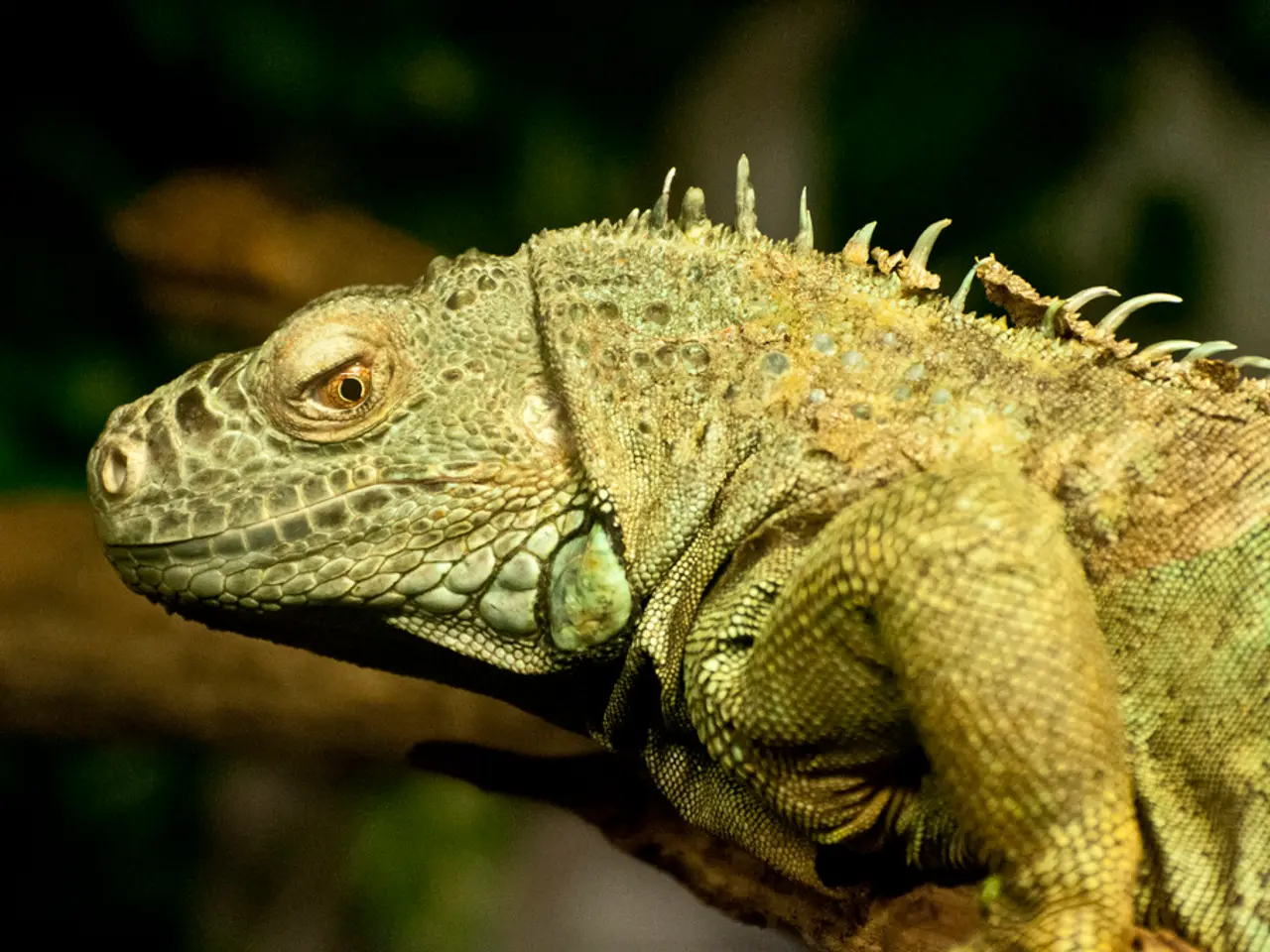Guide on Eliminating Chameleon Plants: Insights into Eradicating Chameleon Plants
In the quest to rid gardens of the resilient Houttuynia cordata, commonly known as the chameleon plant, a combination of persistent physical removal and cautious use of targeted herbicides or non-toxic products is essential. This invasive species, known for its deep-running rhizomes, requires a multi-pronged approach to ensure effective and complete eradication.
Manual Removal
The first line of defence against chameleon plants is manual removal. To ensure thorough eradication, dig out the roots and rhizomes, going at least 1-2 feet deep since roots can extend deep into the soil. Be meticulous in the removal of every piece of root, as even a small segment left in the soil can regenerate the plant. Perform this digging in early spring before the plant matures and spreads aggressively. Use physical barriers such as ground cloth or layers of cardboard and rock to suppress regrowth after removal [1].
Natural/Non-Toxic Control
A less invasive method for controlling chameleon plants involves smothering them with a thick layer of cardboard or mulch to block light and inhibit growth. This method requires time and persistence, especially for mature plants, and may not fully eradicate them. Repeated manual removal combined with smothering may gradually reduce populations but is labor-intensive and slow [1].
Targeted, Non-Toxic Herbicide Alternatives
Some gardeners have had success in controlling chameleon plants with targeted, non-toxic herbicides. One user reported success with a product called Double Play by Ferti-lome, which when applied carefully with a brush onto leaves, caused plants to brown and die over several weeks without broad spraying [1]. Glyphosate-based herbicides (e.g., Roundup) can also be effective if carefully painted on leaves, but should be used cautiously as they are not natural and can harm surrounding plants. Chemical herbicides are generally a last resort due to the plant’s resilience and potential impact on native plants [2][4].
Avoid Common Pitfalls
Simple pulling or surface digging is ineffective, as rhizomes regrow from small fragments. Fertilizer-related weed control products are unlikely to eradicate Houttuynia cordata but may help manage growth indirectly by promoting competing plants [3].
A Word of Caution
Because of the plant’s toughness, many gardeners only manage to keep it under control rather than eradicate it completely. Choosing to plant native and competitive plants after removal can help resist reinvasion [1].
In conclusion, there is no quick, guaranteed method for eradicating chameleon plants. Eradication requires persistent digging, removal of root fragments, and potentially spot-treatment with non-toxic herbicides painted on the leaves. Combining physical removal with careful, localized herbicide application (such as Double Play or glyphosate paint) currently offers the best chance for control without broad toxicity to other plants [1][4].
Sources:
[1] Knott, L. (2019). How to remove chameleon plant. [online] Gardening Know How. Available at: https://www.gardeningknowhow.com/ornamental/weeds/chameleon-plant/chameleon-plant-removal.htm
[2] University of California Agriculture and Natural Resources. (2019). Chameleon Plant. [online] Available at: https://ucanr.edu/sites/InvasivePlants/files/266732.pdf
[3] University of Florida IFAS Extension. (2021). Chameleon Plant. [online] Available at: https://edis.ifas.ufl.edu/pdffiles/pp/pp32300.pdf
[4] Cornell University Cooperative Extension. (2021). Invasive Plants of New York and the Northeast: Chameleon Plant. [online] Available at: https://www.invasiveplants.cornell.edu/weeds/chameleon-plant/
Author’s Bio:
Bonnie L. Grant is a professional landscaper with a Certification in Urban Gardening and has been gardening and writing for 15 years. Her articles have appeared in various publications such as Garden Guides, SF Gate, and Open Gardens. She has also written for Ornamental News, Garden Centres, and Access Garden Supplies. Grant is a member of the Association of Professional Landscape Designers, National Garden Association, and Garden Communicators International. She enjoys growing herbs, vegetables, and ornamental plants with the hope they’ll produce good-tasting treats and a beautiful garden.
In the homestead, combining the gardening techniques of manual removal and natural/non-toxic control can significantly aid in managing the chameleon plant, a persistent invasive species in the home-and-garden and lifestyle domains. The manual removal process involves digging out roots and rhizomes, while the natural control method uses cardboard or mulch to smother the plant, both requiring patience and persistence.




